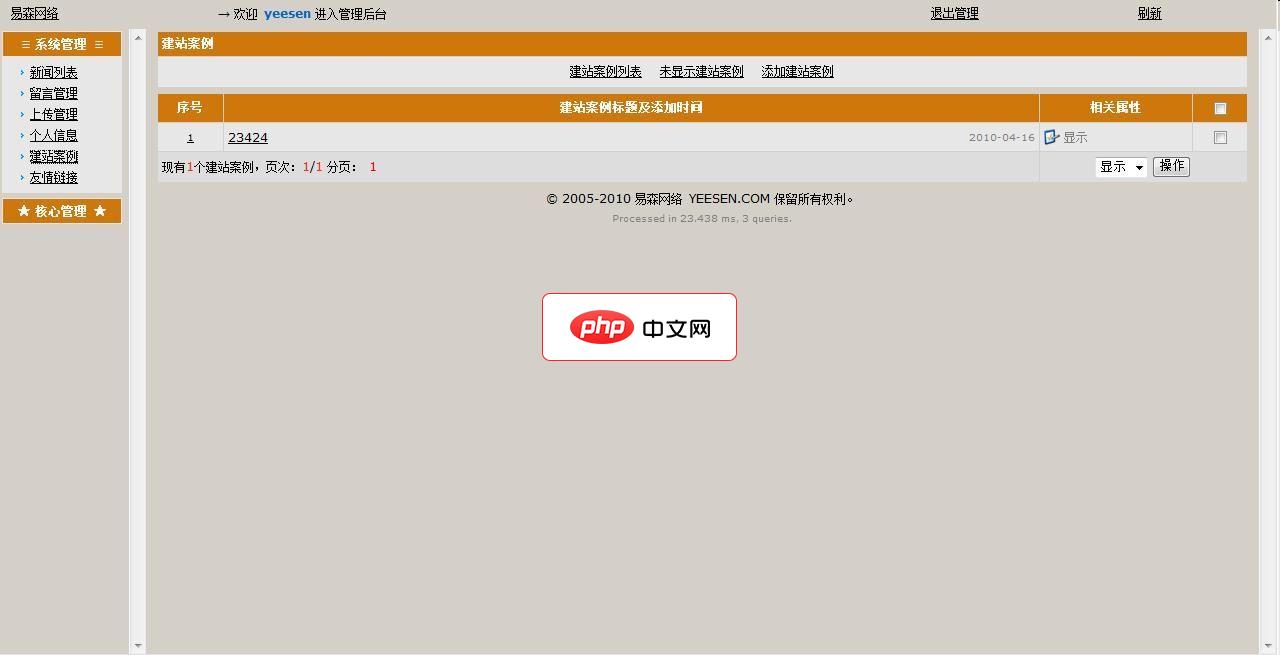
使用Grpcgo中间件设置Cookie进行身份验证
本文介绍如何在Grpcgo中利用中间件机制设置Cookie实现身份验证。
解决方案
通过自定义中间件,Grpcgo可以有效地进行身份验证并设置Cookie。以下代码片段展示了具体实现:

如果您是新用户,请直接将本程序的所有文件上传在任一文件夹下,Rewrite 目录下放置了伪静态规则和筛选器,可将规则添加进IIS,即可正常使用,不用进行任何设置;(可修改图片等)默认的管理员用户名、密码和验证码都是:yeesen系统默认关闭,请上传后登陆后台点击“核心管理”里操作如下:进入“配置管理”中的&ld
 0
0

<code class="go">func authInterceptor(ctx context.Context, req interface{}, info *grpc.UnaryServerInfo, handler grpc.UnaryHandler) (interface{}, error) {
// 从请求头获取Cookie
cookie, err := extractCookie(req) //自定义函数,从请求中提取Cookie
if err != nil {
return nil, grpc.Errorf(codes.Unauthenticated, "missing or invalid cookie")
}
// 验证Cookie
isValid, err := verifyCookie(cookie) //自定义函数,验证Cookie有效性
if err != nil || !isValid {
return nil, grpc.Errorf(codes.Unauthenticated, "invalid cookie")
}
// 将用户信息添加到上下文
newCtx := context.WithValue(ctx, "user", "authenticated") //根据实际情况替换"authenticated"
return handler(newCtx, req)
}</code>extractCookie 和 verifyCookie 函数需要根据实际应用场景进行自定义实现,分别负责从请求中提取Cookie值和验证Cookie的有效性。
在main函数中注册该中间件:
<code class="go">// 注册AuthInterceptor中间件 grpcServer := grpc.NewServer(grpc.UnaryInterceptor(authInterceptor))</code>
通过以上步骤,即可在Grpcgo中使用中间件设置Cookie并完成身份验证。 请注意,extractCookie 和 verifyCookie 函数的具体实现取决于您的应用架构和Cookie的存储和验证方式。 例如,extractCookie 可能需要解析HTTP请求头,而verifyCookie 可能需要与数据库或其他身份验证系统交互。
以上就是Grpcgo如何使用中间件设置Cookie进行身份验证?的详细内容,更多请关注php中文网其它相关文章!

每个人都需要一台速度更快、更稳定的 PC。随着时间的推移,垃圾文件、旧注册表数据和不必要的后台进程会占用资源并降低性能。幸运的是,许多工具可以让 Windows 保持平稳运行。

Copyright 2014-2025 https://www.php.cn/ All Rights Reserved | php.cn | 湘ICP备2023035733号